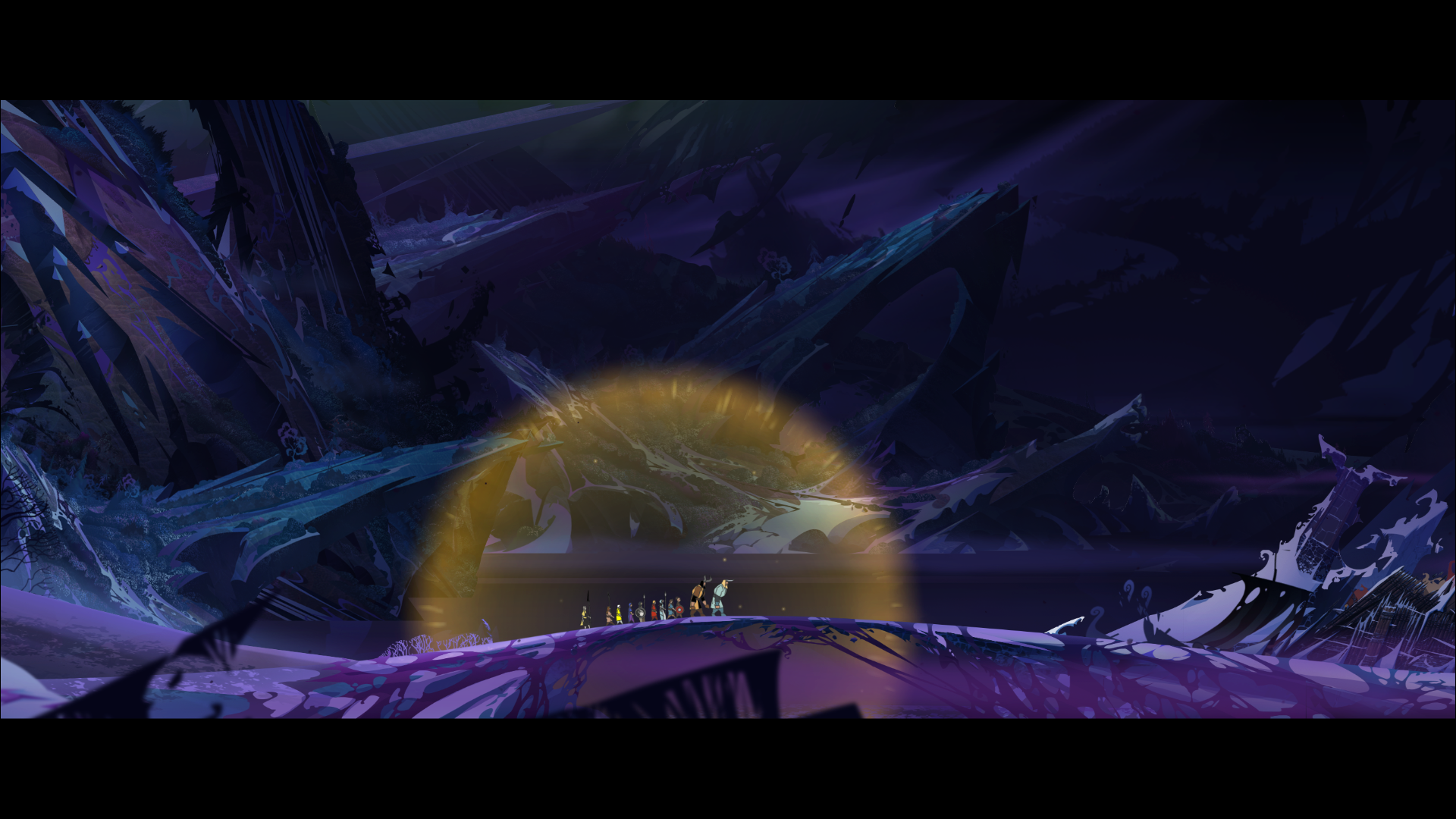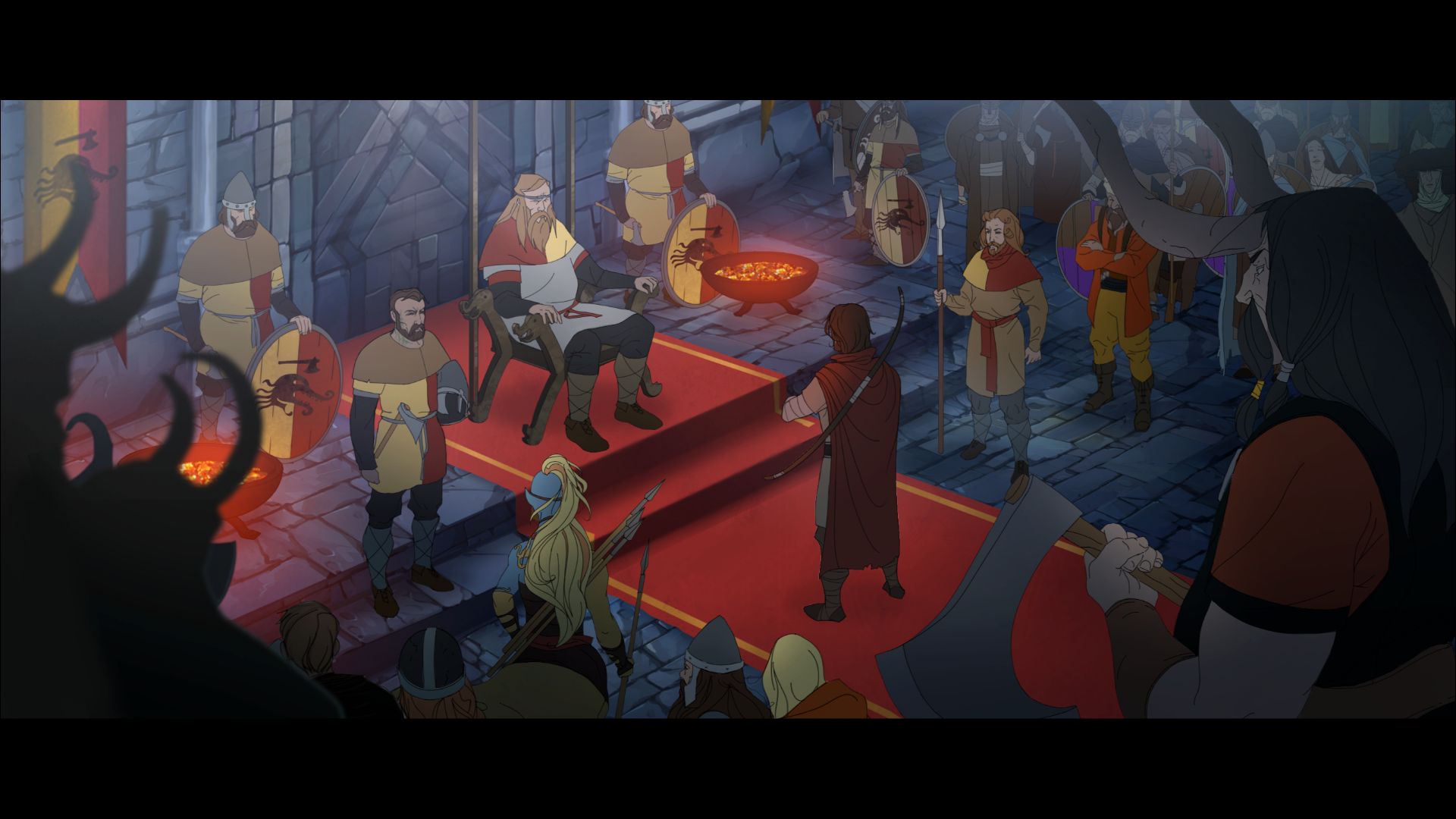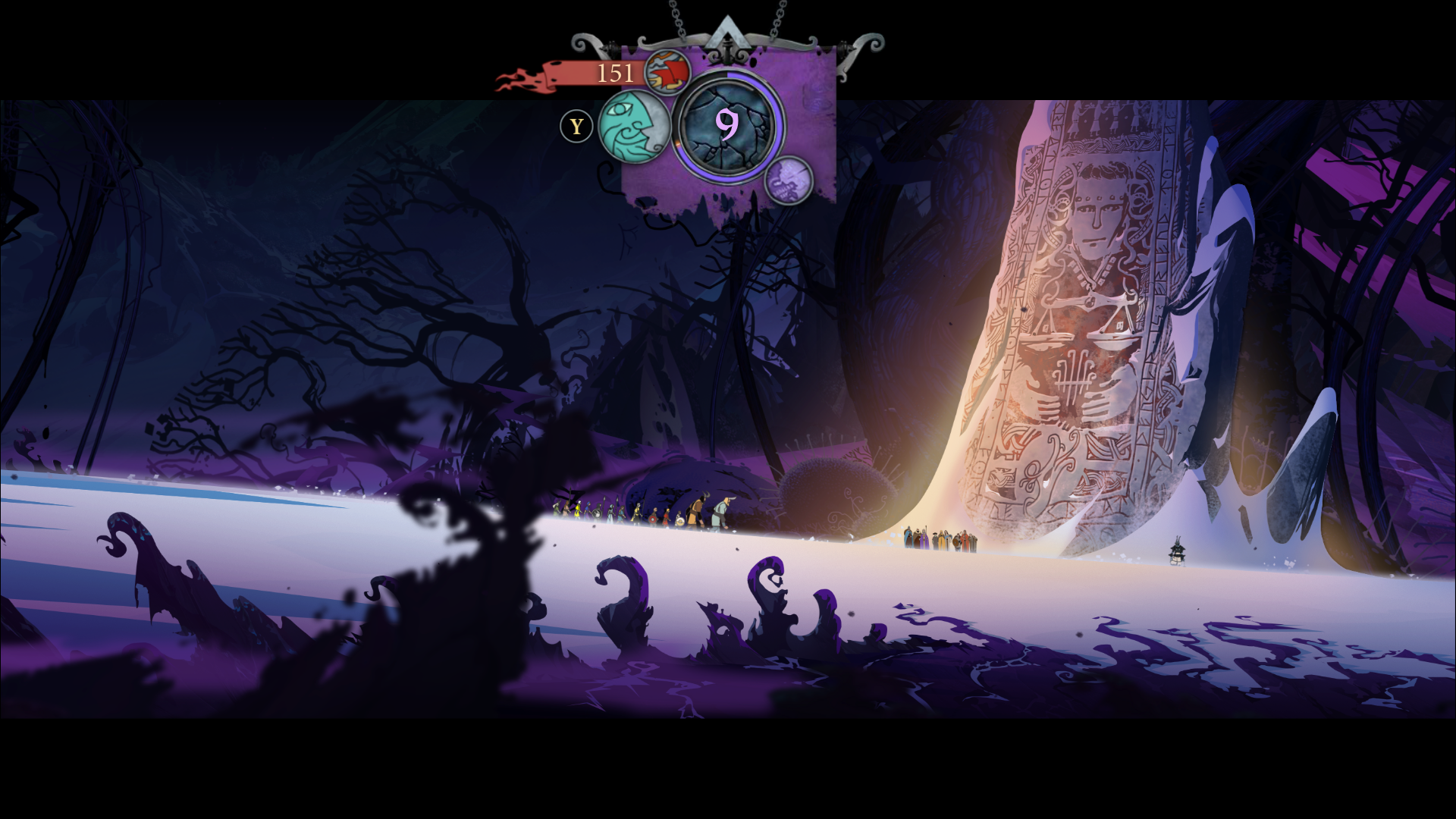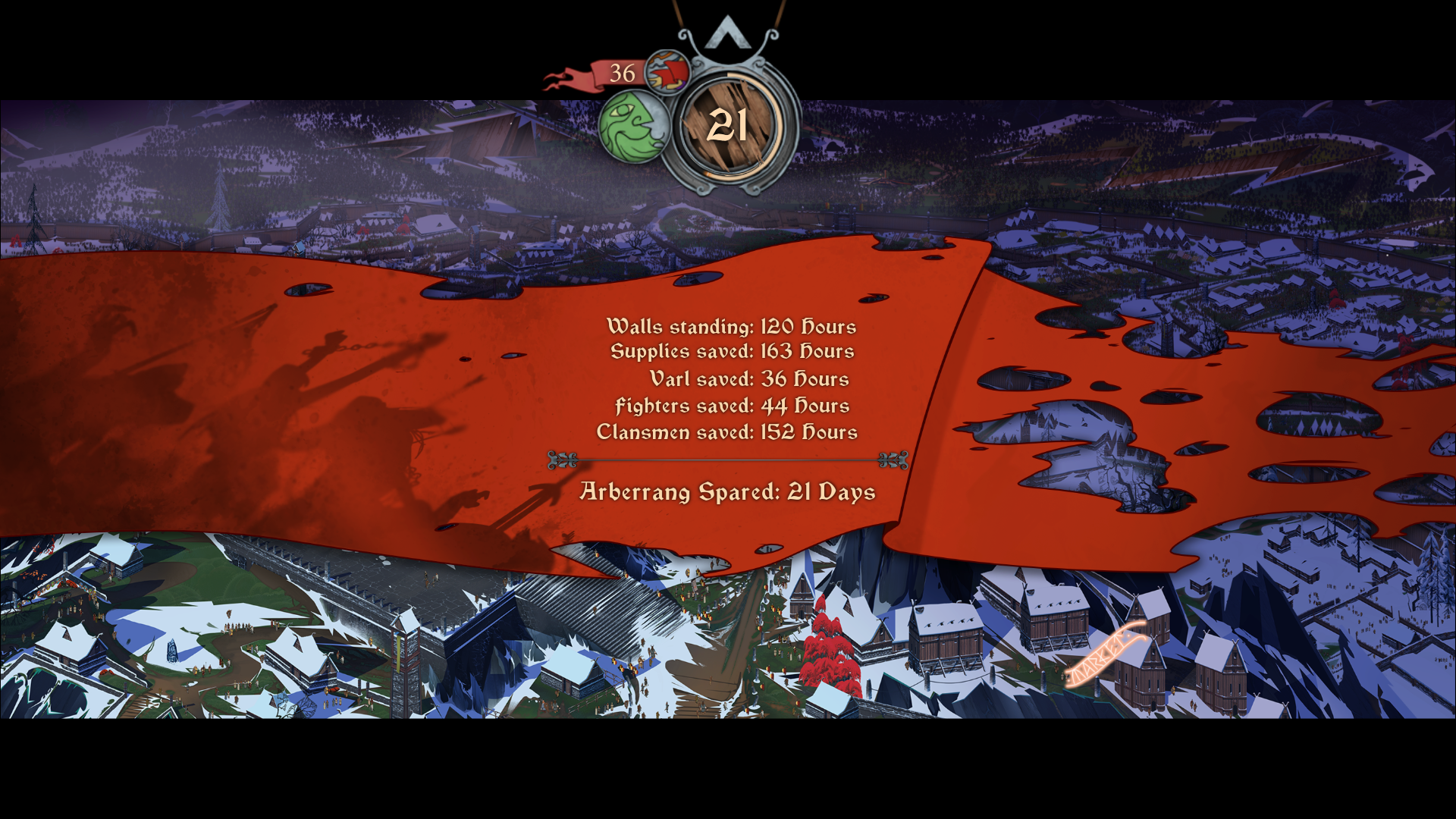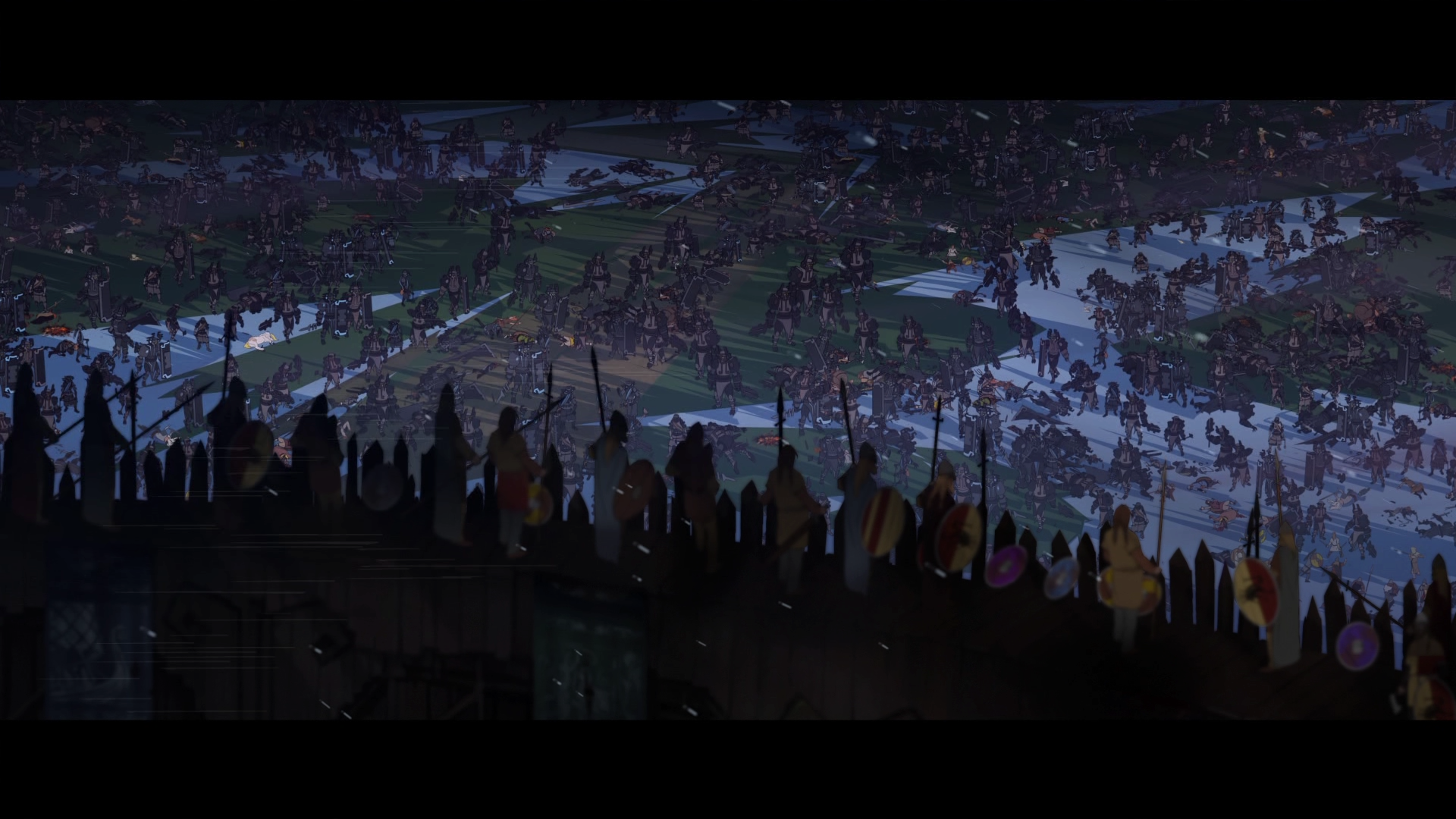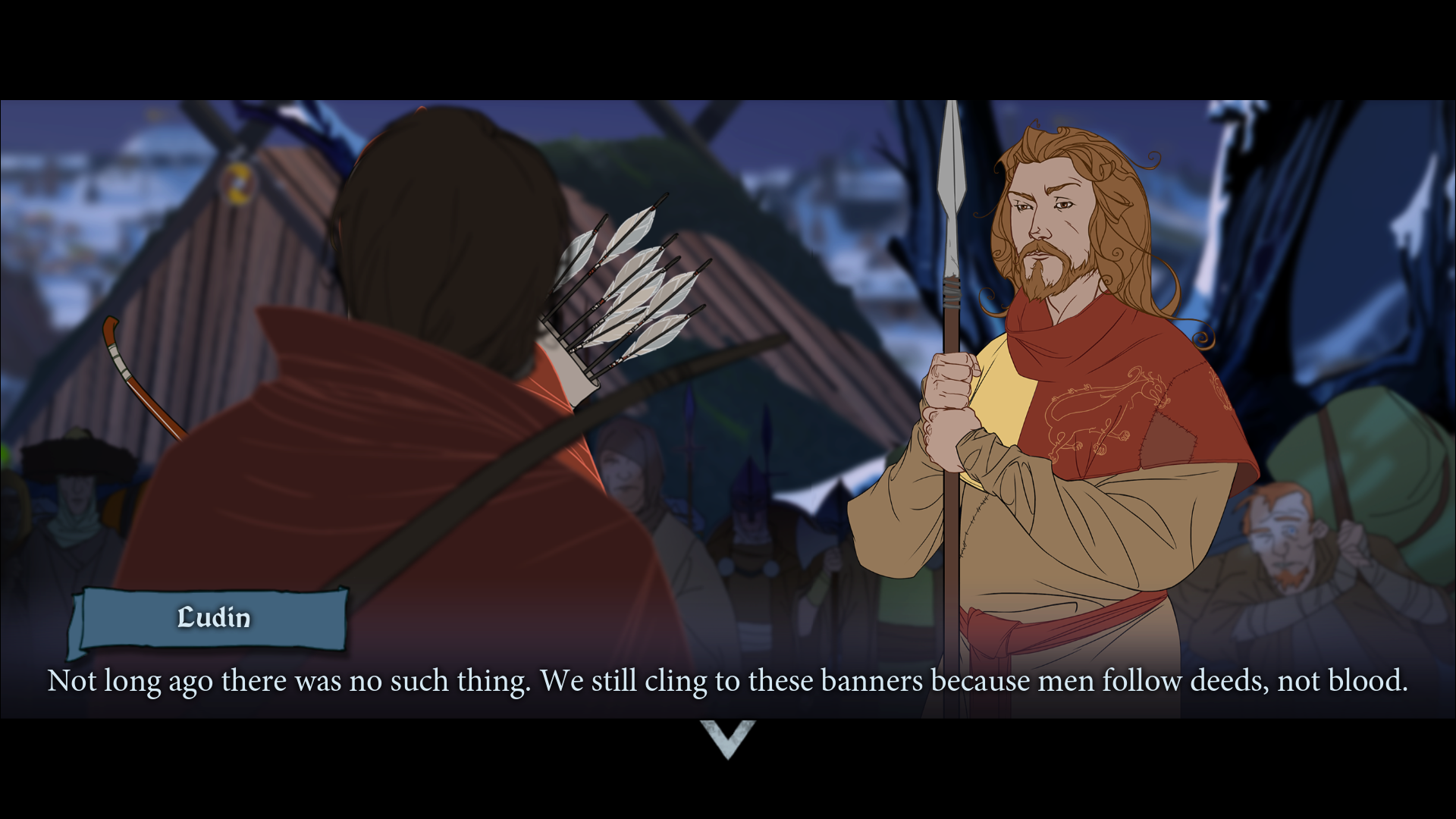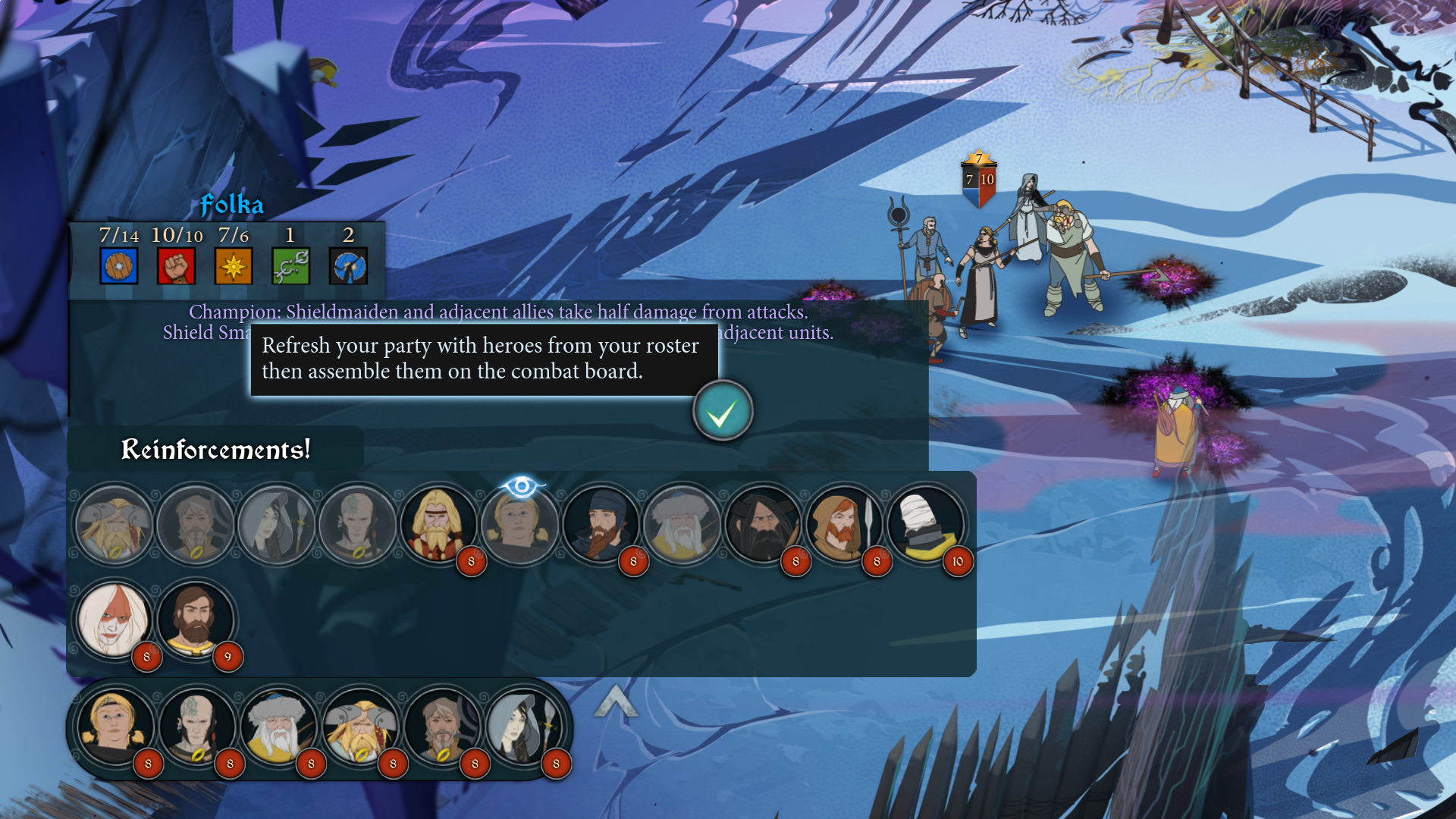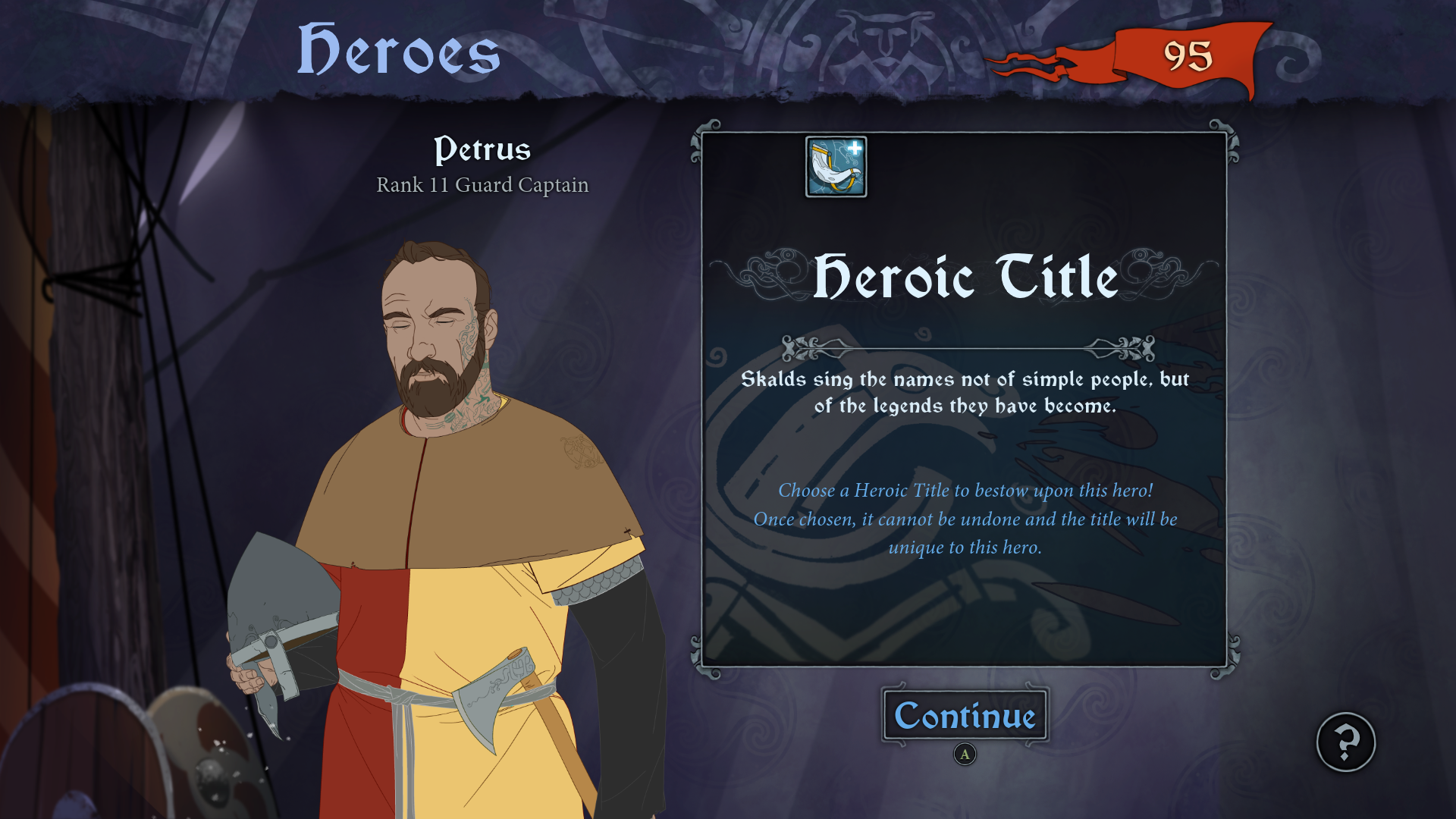The Banner Saga 3 review
Over the past few years, my love for The Banner Saga grew from absolutely nothing (I discovered the second game when it released on Xbox’s Games With Gold service) to something I think about at least once a week. It’s hard not to marvel at what this trilogy achieved with the culmination of Banner Saga 3.
If you’re coming into this article blind (and don’t want to read my reviews of part 1 and part 2) here’s the least you need to know: One day, the sun stopped moving. Strange creatures called dredge appeared soon after that. Then a world-devouring serpent appeared, marking the start of the apocalypse. And meanwhile a wall of darkness creeps southward, consuming everything.
During this time of chaos, a group of villagers flee their hometown with dredge in pursuit. Under the banner of Skogr (their village), these people search for safe haven, moving from city to city while looking for food and shelter. But the dredge follow them, and the townsfolk can barely stay ahead of the growing dredge army and the wall of darkness.
At the very start of the first game, players choose to play as the woodsman Rook or his daughter Alette and begin making decisions. These choices could be as simple as whether or not to post sentries; they could be more complex, like how to deal with survivors from another village. (That could mean more foragers, or more mouths to feed, or potential thieves and brigands.)
These moments stack up over time as the player carves their own course. Do you save as many people as you can? Do everything in your power to protect the villagers from Skogr? Or do you think only of your personal survival?
Keep it together
At the start of The Banner Saga 3, my caravan is in a sorry state and there’s no one to blame but myself. I led almost 1,000 people to our goal—the capital city of Arberrang—but at a heavy cost. Every person who died on our journey died because of my choices. Every scene creates a whisper of anxiety because I can’t know the consequences of my actions. It might be hours before the aftermath hits.
I’ll give an example. Soon after arriving in Arberrang, the dredge horde assaults the city. A meeting with the king forces me to find a way to win his people’s trust, which meant agreeing to a daring maneuver that might break the siege...and bribe others to help. That means sacrificing half of my caravan’s supplies and volunteering most of my fighters, despite the fact that many of them would probably die in the effort.
Minutes after our successful maneuver, my troupe retreats from the gates and comes across magic-users repairing the city walls. To protect my villagers, I decide to send 20 men (probably to their deaths) to help the repair efforts and buy us time. This, in turn, helps us reach the next area just in time to save a group of families from a surprise dredge attack.
... So, let’s review: In the span of five minutes, I lost half my supplies, 150 fighters, and 20 townsfolk, but gained 50 new villagers who needed food and shelter. Moments like this are sprinkled throughout The Banner Saga and solidify the tone that Stoic Studio worked so hard to create. Part of being a leader means pressing onward, even after a defeat.
Journey’s end
One key component of The Banner Saga 3 is a “last stand” mechanic. As the trilogy comes to a close, the world begins to crumble and hope fades. Everyone who has survived up to that moment must bunker down behind the walls of Arberrang and hold out for as long as possible. The city becomes a last bastion, and the mood worsens as more and more people die in the fight for survival.
This is when I was held accountable for my choices, a juncture point that makes or breaks the world. My resources came into play in a very tangible sense: villagers spared, supplies carried, and allied strength all contribute to how many hours Arberrang will stand. This event pairs with the game’s parallel storyline, where a small group of heroes undertake a desperate mission to turn the tide.
I won’t spoil any of the story beats here for two reasons. First, the trilogy is absolutely worth adding to your backlog. (I would even argue that it belongs in one of the top spots). And second, I have no idea how many moments are based upon player choice. I plan to replay the whole saga, and I’m curious how many major events will play out differently based upon party makeup and how I treat certain people.
Came a long way
In case you couldn’t tell, the true magic of The Banner Saga is the investment over the course of a trilogy. The lore deepens, the threat worsens, and familiar faces come and go. But for the characters who survive, there’s a real and measurable sense of development. When I first met Ludin, for example, he was an insufferable and arrogant prince. He blatantly leveraged his title and expected absolute obedience.
By the end of his character arc, Ludin is a changed man. He’s seen true leadership in action, and he's suffered alongside the rest of the Skogr caravan. In my experience, he survived the trip to Arberrang, but his perspective changed along the way. As his entire world crumbles around him, Ludin decides to relinquish his title and power; if he can’t earn the respect of people, he has no right to become their king.
And I can think of a dozen similar characters. The third game introduces a handful of new companions (as well as new classes, skills, and insights into the series' mythos), but those men and women still grow and change along the journey. Every single character becomes another thread in the Skogr banner, a tapestry of interwoven stories that build a consistent and coherent world. I know I keep coming back to this, but it’s an impressive achievement for Stoic Studio, a team of just 18 people.
Worse for wear
While it is the third part of a single vision/experience, The Banner Saga 3 makes a few system changes. Boss battles are now wave-based encounters, adding a greater challenge and offering exclusive rewards. Characters can now be given “heroic titles” with unique perks, like extra damage boosts for a character targets the same enemy repeatedly. Bringing a hero to max level creates an option to fine-tune stats and invest into extra bonuses. (See, even character progression allows the player to create a truly customized experience.)
In fact, the game’s only real flaw appears in that hero upgrade menu. In my experience certain options would lock up and become inaccessible. The only way to get around the hiccup was quitting the game or leaving those upgrade points until the next fight. But in a game where upgrades are few and far between, that makes this issue less of an annoyance and more of a hindrance.
After discussing the game with friends, I can see why some people are leery of the “cause/effect” cycle. But that is the beating heart of this saga, the thing that sets The Banner Saga apart. This sense of ownership is the same secret sauce that makes Mass Effect (or any BioWare game) so remarkable and timeless. The team at Stoic didn’t just tell me a good story—they let me create a unique one.
In a nutshell
At the end of the day, The Banner Saga 3 will be near the top of my 2019 awards list. Not because it’s a perfect game, but because it represents some of the best storytelling I’ve experienced since I first played Mass Effect.
I stepped into this grim and crumbling world, but not as a hero. Instead, I became part of a village. I got to know its people, to share their stories and their struggles. And when it came time to make a hard choice, that task fell to me. I owned those decisions and their consequences, whether it was short term or long term. These moments stand out because I earned them, because my people suffered and sacrificed but got something back along the way. It’s a beautiful and powerful storytelling system, and something I'll always appreciate.
That makes The Banner Saga 3 a fairly unique beast. Still, I can see similarities with the tactical perspective of Shadowrun Returns, the Viking-inspired setting of Jotun, and the consequential decisions from The Witcher 3.
Pros
+ Meaningful payoffs
+ Character developments
+ Unique mythology
+ Evolved combat systems
+ Immersive style
Cons
- Menu hiccups


